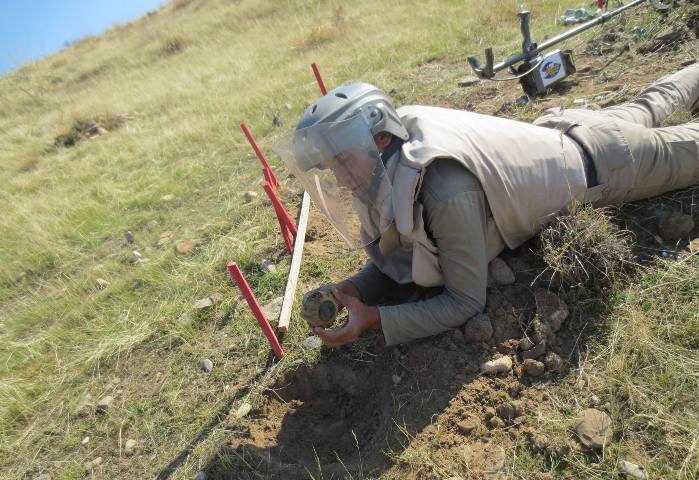Landmine casualties remain high for third consecutive year: UN report
The annual Landmine Monitor, which is dedicated to reporting a global overview of the landmine situation, showed that 2017 saw more than 7,000 casualties caused by mines and other ERW materials, including nearly 2,800 deaths.

- Country:
- Afghanistan
- Iraq
- Libya
- Pakistan
- Syrian Arab Republic
- Ukraine
- Yemen Rep.
Despite hundreds of millions of dollars in investment to rid the world of landmines, the number of casualties caused by explosive remnants of war (ERW) remains high, according to the latest UN-backed civil society report on the issue, published on Tuesday.
The annual Landmine Monitor, which is dedicated to reporting a global overview of the landmine situation, showed that 2017 saw more than 7,000 casualties caused by mines and other ERW materials, including nearly 2,800 deaths.
Armed conflict, namely in Afghanistan and Syria, contributed to last year’s exceptionally high casualties, with 2,300 and more than 1,900 recorded in these States alone, respectively.
Thousands of casualties more were accounted for in Ukraine, Iraq, Pakistan, Nigeria, Libya, Yemen and Myanmar collectively – with Myanmar recognized as the only state to use landmines in the past year.
While a decrease compared to last year's numbers, this marks the third consecutive year of high numbers of recorded casualties, with civilians accounting for 87 per cent, and children making up half among them.
Monitor authors state “it is certain” the number of casualties is significantly higher than recorded.
Report editor, Loren Persi, said: “Civilians are by far the majority of casualties, and victims continue to require support long after conflicts pass and the last mines are cleared.”
In 2017, international investment in mine action increased by over 200 million dollars, Mr Persi said, totalling over 770 million in international and national support combined.
“Regrettably,” she said, support allocated for victim assistance has reached an all-time low.
The UN World Health Organization (WHO) has declared landmines a “health threat,” and states that survivors require an adequate health-care response, yet those most affected by landmines and ERW tend to be in urban areas, where health services are limited.
Those who survive explosions with permanent disabilities also face “social and environmental barriers that can preclude their full and equal participation within their communities,” the agency reports.
Work of demining must happen in places facing acute conflict, but also in States and territories facing threats of unexploded remnants of war, Amelie Chayer, of the International Campaign to Ban Landmines, told UN News.
“The work of demining must also continue in places like Vietnam, Laos, and Cambodia, where mines have been in the ground for 50 years long,” she said.
Sixty countries are known to have mine contamination, with over half committed to the Mine Ban Treaty, which orders contamination to be cleared within 10 years--only four are on track to meet their deadlines
The Monitor reports that Mauritania completed clearance of landmines last year, and estimates that most countries can achieve this by the year 2025.
ALSO READ
KZN reaffirms commitment to providing essential services
Portugal's Catholic Church to compensate sexual abuse victims
CBI creates e-mail ID for land-grab victims in West Bengal's Sandeshkhali
IMF's Georgieva says China should boost domestic demand, shift toward services
IMF's Georgieva: China should boost domestic demand, shift toward services










